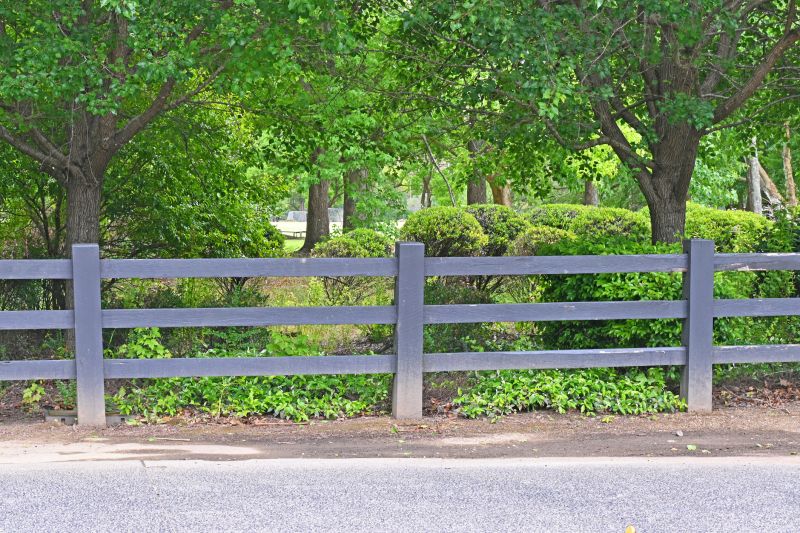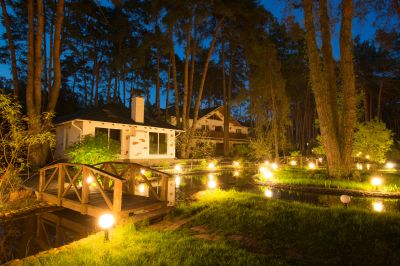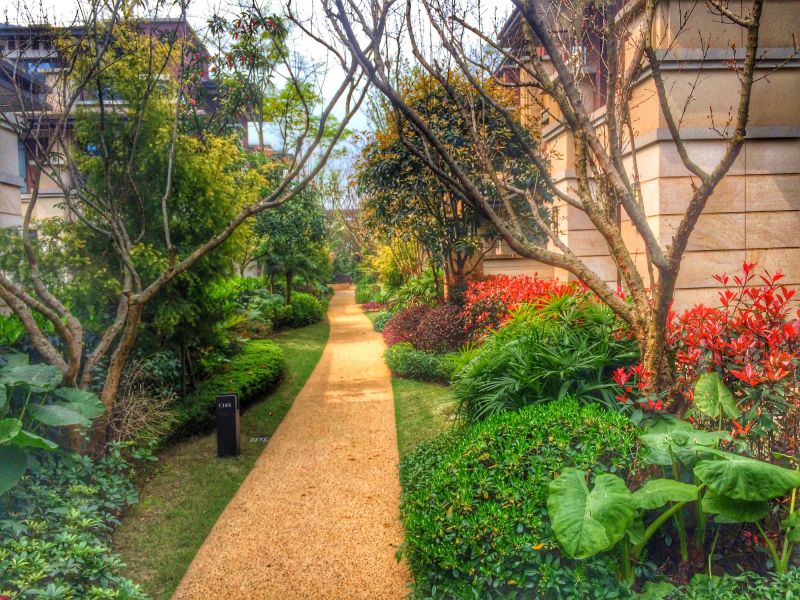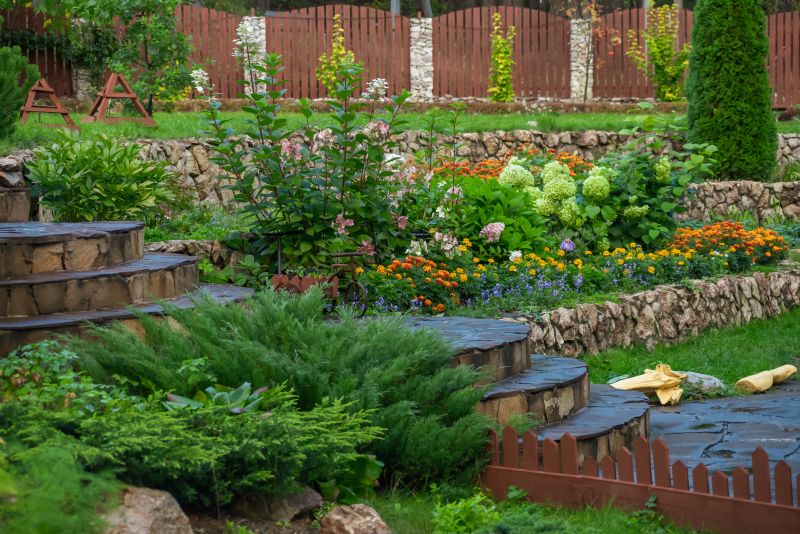Best Timing for Railroad Tie Landscaping
Railroad ties landscaping can enhance outdoor spaces by providing durable and aesthetic borders, pathways, and retaining walls. Proper timing ensures optimal installation, longevity, and appearance. Understanding seasonal conditions and environmental factors is essential for successful projects.
Spring offers moderate temperatures and increased moisture, making it ideal for installing railroad ties. This reduces the risk of cracking and allows the landscape to settle properly.
Fall provides cooler weather and stable soil conditions, reducing stress on the ties during installation. It also allows for preparation before winter.
High temperatures and dry conditions in summer can cause ties to crack and dry out quickly. Installation during this period requires extra precautions.
Cold weather and frozen ground make installation difficult and may lead to improper setting. It is generally recommended to avoid outdoor work during winter months.

A well-maintained railroad ties landscape during spring showcases fresh growth and vibrant colors.

Autumn leaves complement the sturdy railroad ties used as borders in landscaping projects.

A pathway lined with railroad ties in summer, showing durability in warm weather.

Ways to make Railroad Ties Landscapings work in tight or awkward layouts.

Popular materials for Railroad Ties Landscapings and why they hold up over time.

Simple add-ons that improve Railroad Ties Landscapings without blowing the budget.
| Season | Ideal Conditions |
|---|---|
| Spring | Moderate temperatures, increased moisture, ideal for installation. |
| Summer | High temperatures and dry conditions; installation is less recommended. |
| Fall | Cooler weather and stable soil, suitable for landscaping projects. |
| Winter | Frozen ground and cold temperatures make installation challenging. |
Railroad ties landscaping provides a durable and visually appealing solution for defining outdoor spaces. The longevity of railroad ties depends on proper installation timing, environmental factors, and ongoing maintenance. When installed during appropriate seasons, railroad ties can last for decades, with some lasting over 20 years when properly maintained.

A landscaped garden featuring railroad ties as borders and retaining walls.

A durable pathway constructed with railroad ties in a landscaped yard.

A sturdy retaining wall made from railroad ties supports hillside landscaping.

Creative landscape design incorporating railroad ties for aesthetic appeal.
Individuals interested in railroad ties landscaping are encouraged to assess seasonal conditions and plan installations accordingly. Proper timing can contribute to the durability and visual appeal of the landscape, ensuring the investment remains attractive and functional over time.
